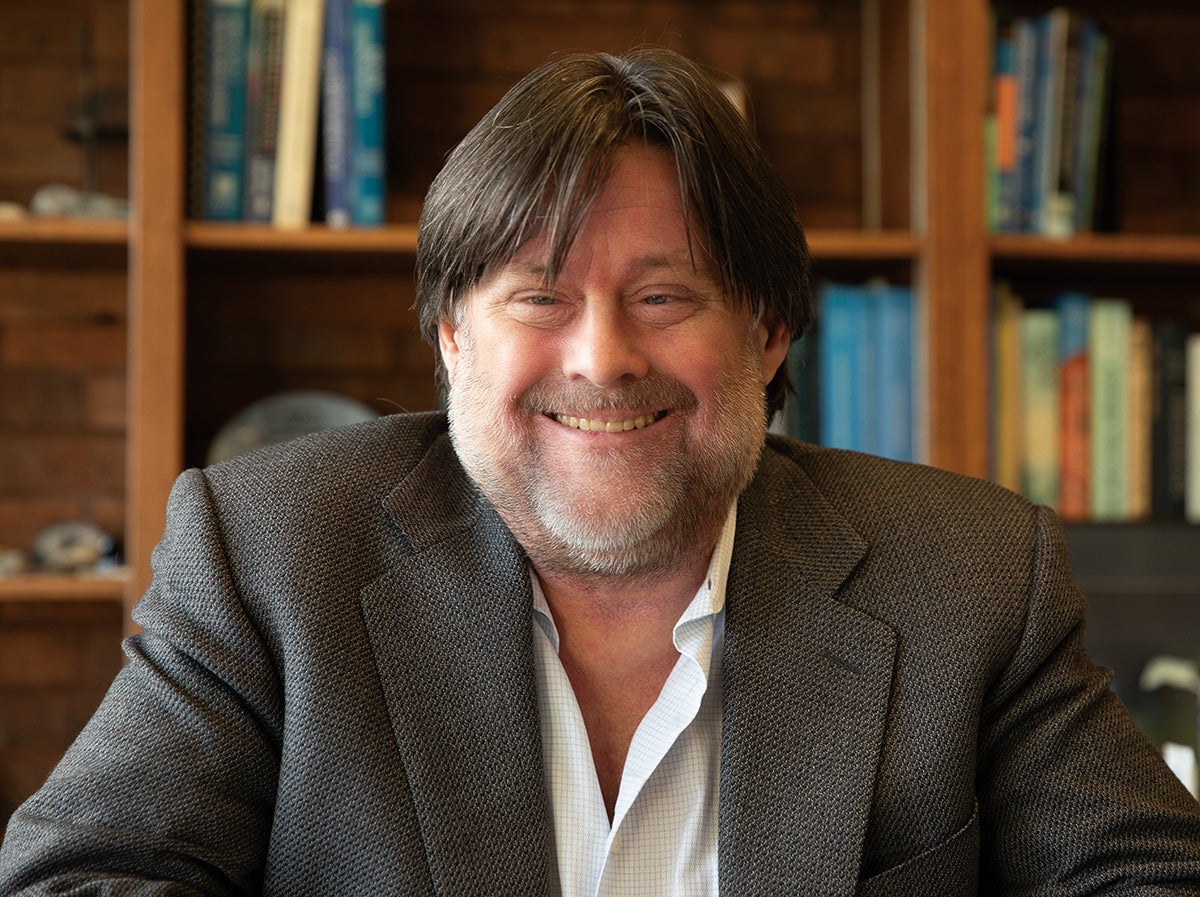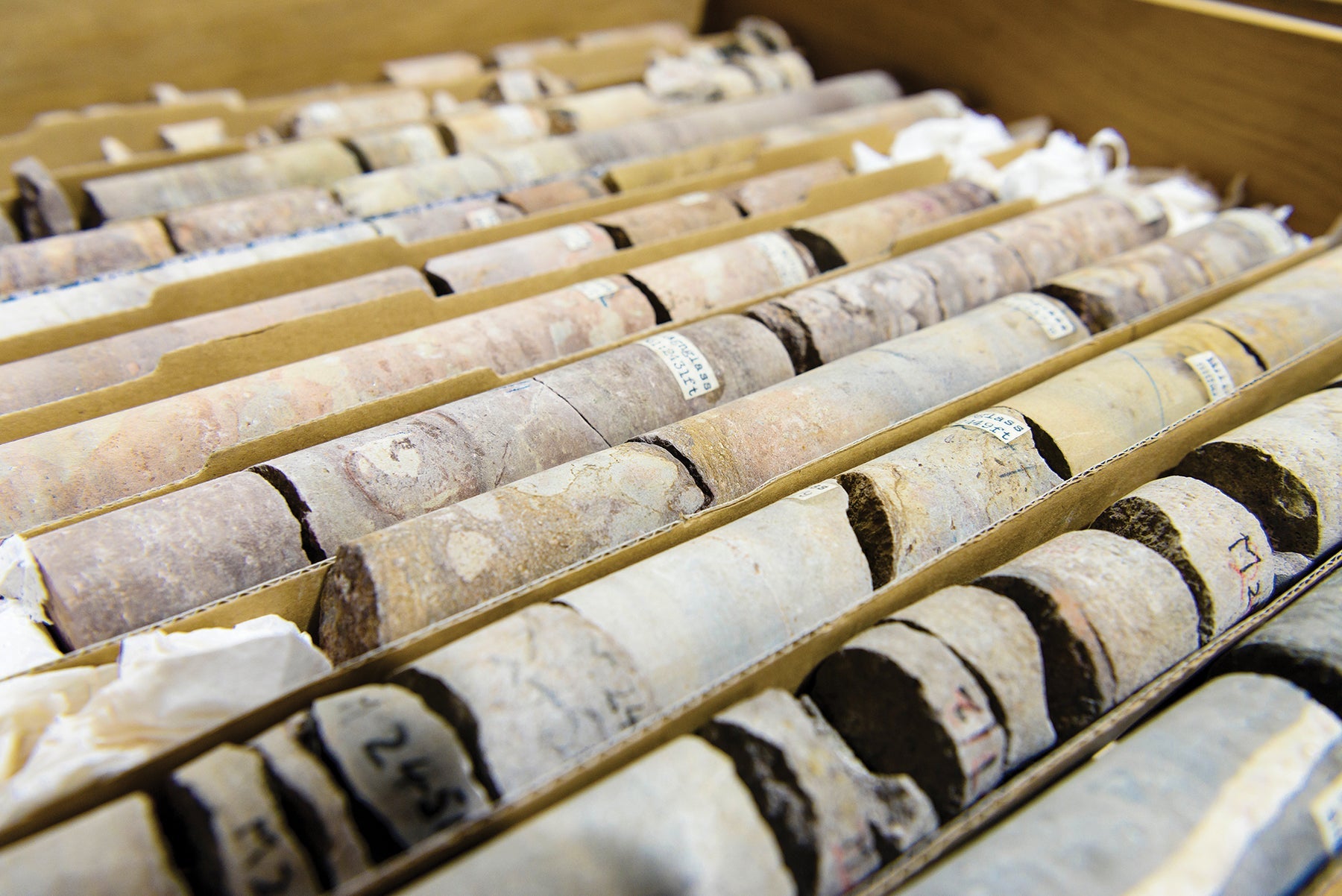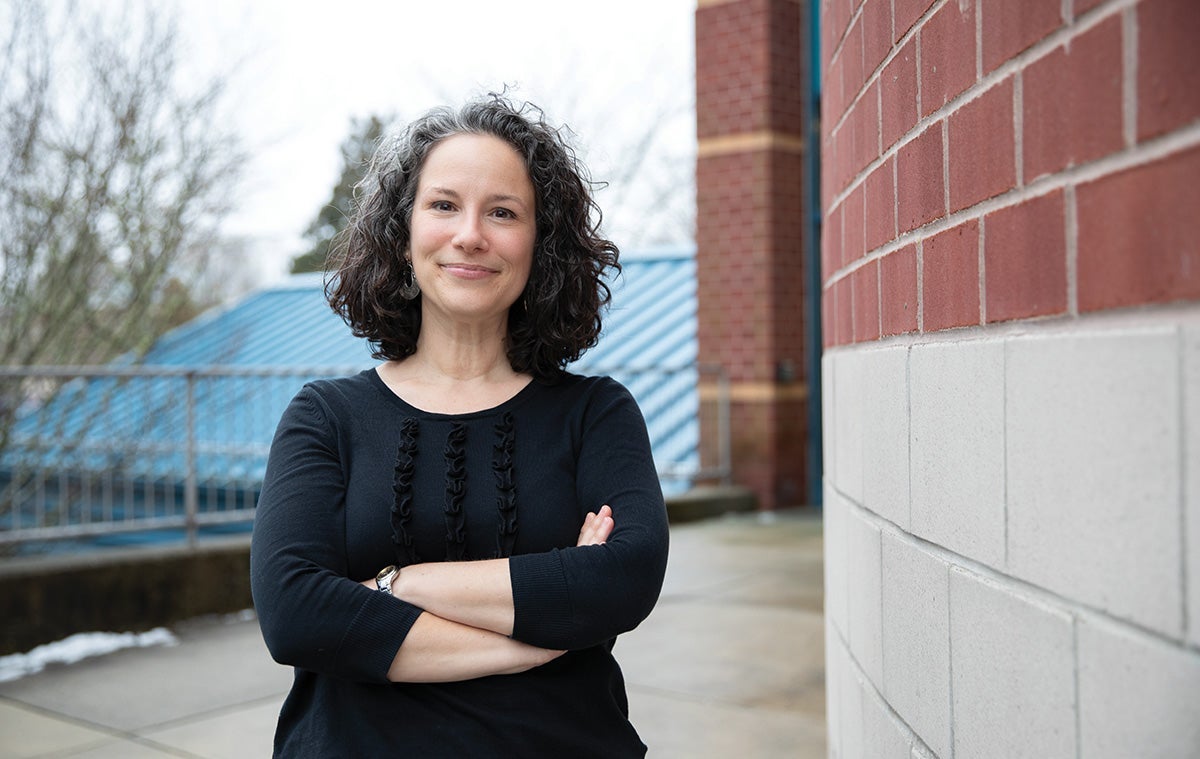This year, the American Association for the Advancement of Science named oceanography Professor Steven D’Hondt and Clinical Professor of Environmental Communication Sunshine Menezes to its fellowship ranks.
Nominated by fellow scientists, the appointments recognize those making significant contributions to scientific research, teaching, technology or administration. The URI professors join a family including Ellen Ochoa, W.E.B. DuBois, and Thomas Edison.
With members in more than 100 countries across dozens of fields of study, the association brings together researchers engaged in scientific study and those who advance the field. The URI fellows exemplified the society’s ethos perfectly with D’Hondt, a field- and lab-based research scientist, and Menezes, a science communication leader, both joining in the same class.
But getting the fellowship wasn’t easy. Even the nomination process is competitive, with the association’s smaller steering groups being allowed only to nominate a small number of people. Then, there is a multi-step review process and, finally, a vote by a leadership council determines the winners.
Steven D’Hondt

Professor Steven D’Hondt has dedicated 25 years to studying the subsurface biome of the ocean floor, working with his peers and students around the globe. The AAAS fellowship honors his work on the diversity and processes of microbiological communities within subseafloor sediments.
“This is a globe-spanning biome that we know very little about,” D’Hondt says. “I’ve been fortunate to spend much of my career exploring it.”
Although these organisms reside miles below 70 percent of the planet’s surface, they can survive and are rarely studied.
“It’s an underexplored living world right here on our own planet,” D’Hondt says.
These organisms, on average, live on so little energy that they directly challenge our understanding of what it means to be alive.Steven D’Hondt
The sheer scope of so many living things so far beneath the ocean floor is significant on its own, and D’Hondt is fascinated by the makeup of the marine organisms. Surviving at mind-bogglingly low rates of respiration, they must either live an extraordinarily long time (perhaps millions of years) or reproduce on far less energy than previously thought possible.
“These organisms,” D’Hondt says, “on average, live on so little energy that they directly challenge our understanding of what it means to be alive.”
D’Hondt began his academic career at Stanford University, where he received a bachelor’s degree in geology. He then worked for the U.S. Geological Survey in California, studying ocean history by searching for evidence of ancient asteroid and comet impacts in marine sediment.
When he earned his doctorate in geological and geophysical sciences at Princeton University, there were only four or five micropaleontologist openings in the country, including one at URI’s Graduate School of Oceanography (GSO) which D’Hondt claimed.
At the University for more than 30 years, D’Hondt has led the Subsurface Biospheres team of the NASA Astrobiology Institute, and he was an executive committee member of the Center for Dark Energy Biosphere Investigations. He has published more than 100 peer-reviewed articles and been cited more than 10,000 times.

D’Hondt and his hundreds of global collaborators have over the years better understood the microbial organisms that challenge our definitions of life. Yet, countless frontiers remain unexplored, including how these organisms interact with one another and how the study of these microscopic creatures apply to human life.
One of D’Hondt’s current projects, in collaboration with the Rhode Island Nuclear Science Center, stems from a concept first proposed in the 1950s that the radioactive splitting of water supports microbial life in marine sediment. This research has bolstered understanding of how to manage nuclear waste.
“We may not yet know how we can extend human life from these microbes living forever,” D’Hondt says, “but we learn basic things about how to engage the world in other ways. And it’s not predictable. We don’t know what we are going to learn that is of use, but we do learn things that are of use.”
D’Hondt says that his research is only possible because of his collaborators—who range from undergraduate students to fellow tenured professors—and because of opportunities like the AAAS fellowship and financial support of the University.
“It is a tremendous privilege to be paid to learn things that people didn’t know before and share that with the world,” he says.
Sunshine Menezes

GSO alumna Sunshine Menezes is a clinical professor and served as executive director of URI’s Metcalf Institute from 2006 until 2023. Housed in the College of the Environment and Life Sciences, the Institute conducts science training for journalists, communication training for researchers, and hosts a plethora of public programs.
As executive director, Menezes led a growing community of academics, state and federal agencies, nonprofits, businesses, community representatives, and news organizations nationwide to advance informed, inclusive public conversations about science and the environment.
“Science communication is absolutely critical for sustaining and improving research,” says Menezes, who has a background in both lab and field-based research and environmental policy.
Researchers cannot be limited to talking only to each another about the impact of their work. They must be able to engage with individuals outside of their own discipline and with diverse public audiences. When done well, Menezes argues, science communication can promote broader public engagement with STEM topics, build public agency, and improve decision-making.
One of the primary components of Menezes’ work, and a key element in her teaching, is understanding the opportunities for, and challenges of, inclusive communication.
“People talk about the general public all the time, but that’s not a real thing,” Menezes says. “There are many different types of public audiences out there, and if we want to communicate well, we have to understand who specifically we are trying to communicate with and what their priorities are, as well as our communication goals.”
Whether writing, speaking, teaching, or working with partners outside of academia, Menezes works to make space for more scholars to improve their science communication skills.
Science communication is absolutely critical for sustaining and improving research.Sunshine Menezes
“A lot more people could be great science communicators if they had the support and the learning to do it better,” she says. “Science communication is not for everyone, but there are more and more people coming from the academy who want to explore science communication in big or small ways. They need support to do it well.”
Menezes was recognized by AAAS because of her work to champion inclusive science communication, which aims to amplify the insights of groups whose perspectives have been minimized or ignored by the scientific community. She speaks to her discipline’s need for continued evolution.
“We can learn so much from varied lived experiences and expertise. It’s important to make sure we’re recognizing the various types of knowledge that people bring to societally important topics that relate to science,” she says.
People from marginalized communities—which can be related to race, ethnicity, gender, disability, and sexual orientation—are often actively or passively excluded from scientific conversations.
“We’ve got some major social, societal problems that science can provide insight on,” Menezes says, “but the solutions require a lot of conversations about what we’re all willing to do and not willing to do. That’s not a scientific question, that’s a social question, and we will only find the best solutions if all affected parties are part of the conversation.”
Hence Menezes strives to train URI students, staff, and faculty, as well as people from other universities, nonprofits, and corporate businesses, in inclusive science communication. And the efforts have worked, with the institute counting more than 3,700 people completing its trainings. That training allows journalists, researchers, and other science communicators to more effectively spark conversations about science.
“Millions of people around the world every day are impacted by the Metcalf Institute,” she says. “It has been an immense privilege to do this work, and I’m excited to keep shifting the paradigm of science communication in my next chapter.”
